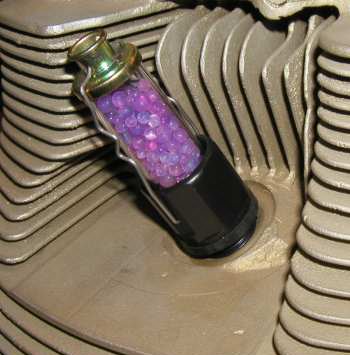In the world of aviation, even when planes are not soaring through the skies, meticulous care and maintenance are essential to ensure their readiness for flight. One crucial aspect of aircraft maintenance, particularly during storage periods, is the preservation of engine integrity. Dehydrator plugs emerge as a small yet indispensable component in this endeavor, effectively combating internal corrosion within aircraft engines. Let's delve deeper into the significance and functionality of these tiny yet vital devices.
Understanding dehydrator plugs
Dehydrator plugs serve a specific purpose: to safeguard aircraft engines against corrosion while they remain inactive, especially during storage durations. They are filled with a desiccant material, often silica gel, known for its exceptional moisture-absorbing properties. This desiccant material serves as a barrier against moisture, preventing its intrusion into critical engine components.
How dehydrator plugs work
The mechanism behind dehydrator plugs is relatively simple yet highly effective. Silica gel, contained within the plug, acts as a sponge for moisture present in the surrounding air. As moisture is absorbed, the silica gel undergoes a visible color change, serving as a visual indicator of its effectiveness. This color change alerts maintenance personnel to the level of moisture absorbed and indicates when replacement or reactivation is necessary.
Reactivation capability
One notable feature of certain dehydrator plugs is their reactivation capability. When the silica gel reaches its saturation point, rendering it ineffective, some plugs can be rejuvenated by applying heat. By subjecting the plug to controlled heating, the moisture trapped within the silica gel is expelled, restoring its moisture-absorbing capacity. This reactivation process enhances the longevity and cost-effectiveness of dehydrator plugs, making them a practical investment for aircraft maintenance operations.
Importance of dehydrator plugs in aircraft maintenance
Aircraft engines are precision-engineered marvels that require meticulous care to ensure optimal performance and longevity. During periods of inactivity, such as storage, the risk of internal corrosion due to moisture buildup becomes a significant concern. Dehydrator plugs act as proactive guardians, mitigating this risk by effectively controlling moisture levels within the engine.
Cost-effective protection
Despite their small size, dehydrator plugs offer substantial protection against potentially catastrophic engine damage caused by corrosion. Considering the relatively low cost of these plugs compared to the potential expenses associated with engine repair or replacement, they represent a remarkably cost-effective preventive measure. Investing in dehydrator plugs during periods of aircraft storage is a prudent decision that can yield significant savings in the long run.
Conclusion
In the intricate world of aviation maintenance, every component plays a crucial role in ensuring the safety and reliability of aircraft operations. Dehydrator plugs may seem inconspicuous, but their role in protecting aircraft engines from internal corrosion during storage periods cannot be overstated. By harnessing the moisture-absorbing properties of materials like silica gel, these plugs provide a simple yet effective solution to a potentially costly problem. As aviation continues to evolve, the importance of such preventive measures remains paramount, underscoring the significance of dehydrator plugs in the realm of aircraft maintenance and safety.
Price
Dehydrator plugs cost from $10 - $20


